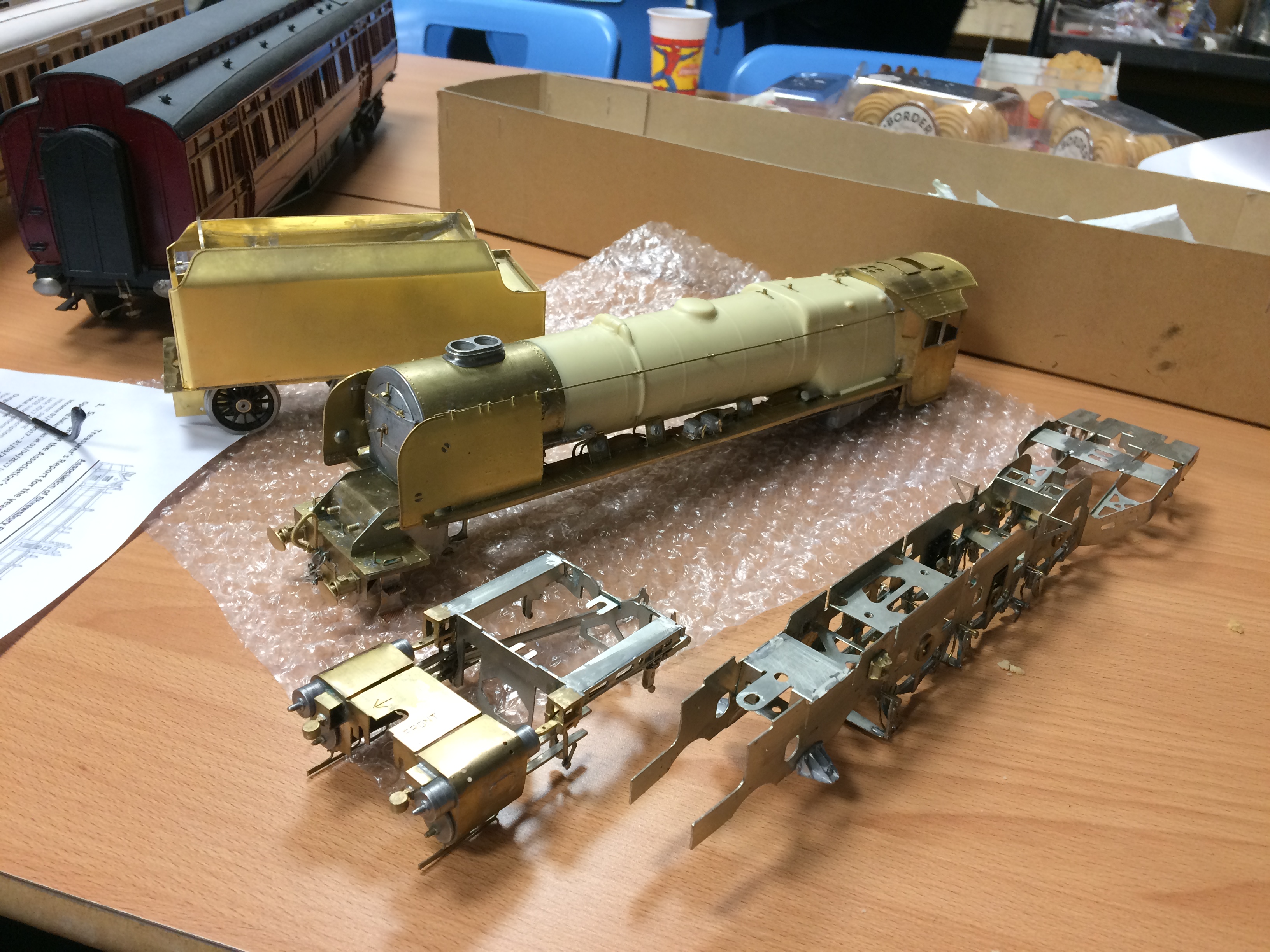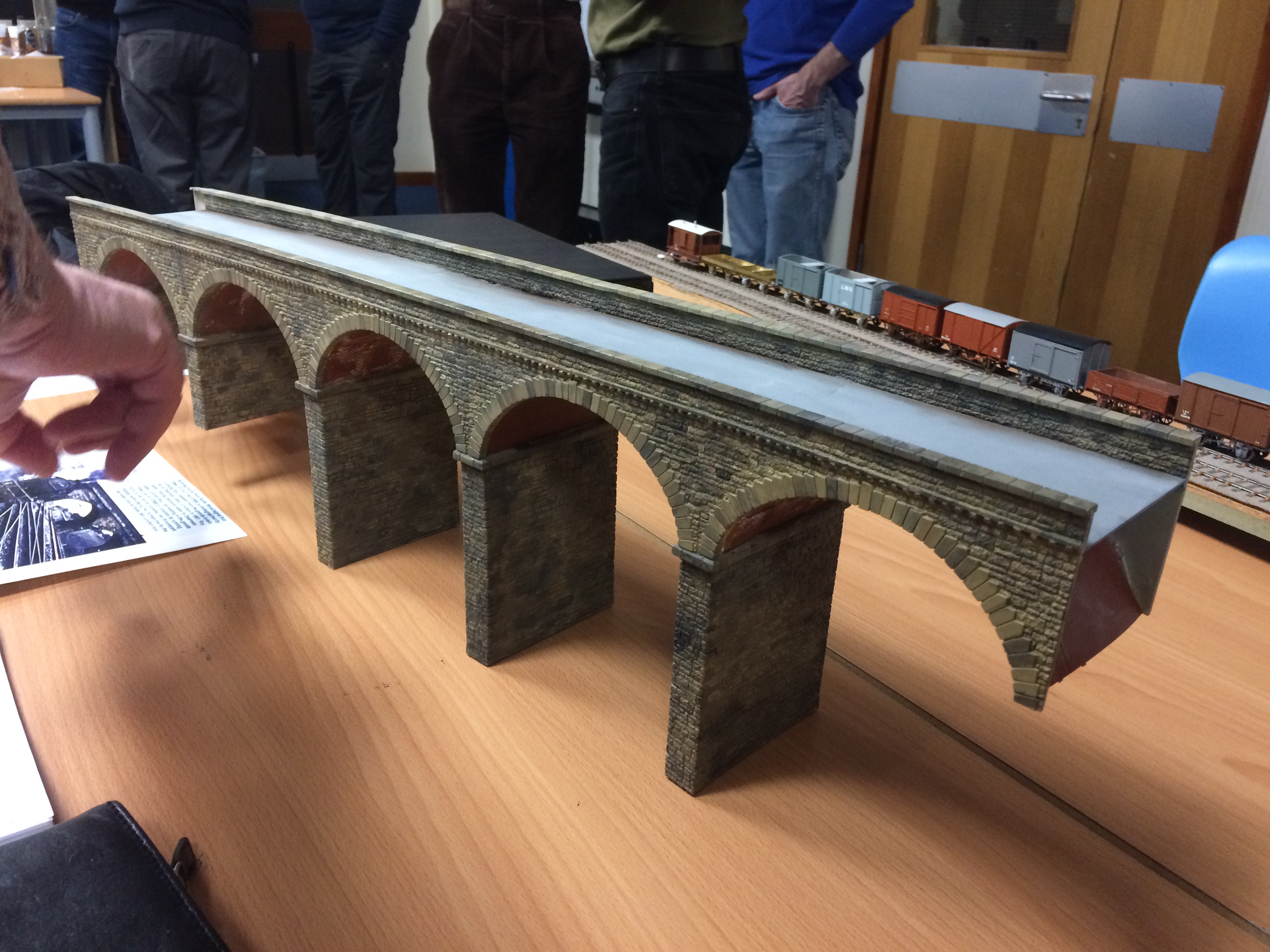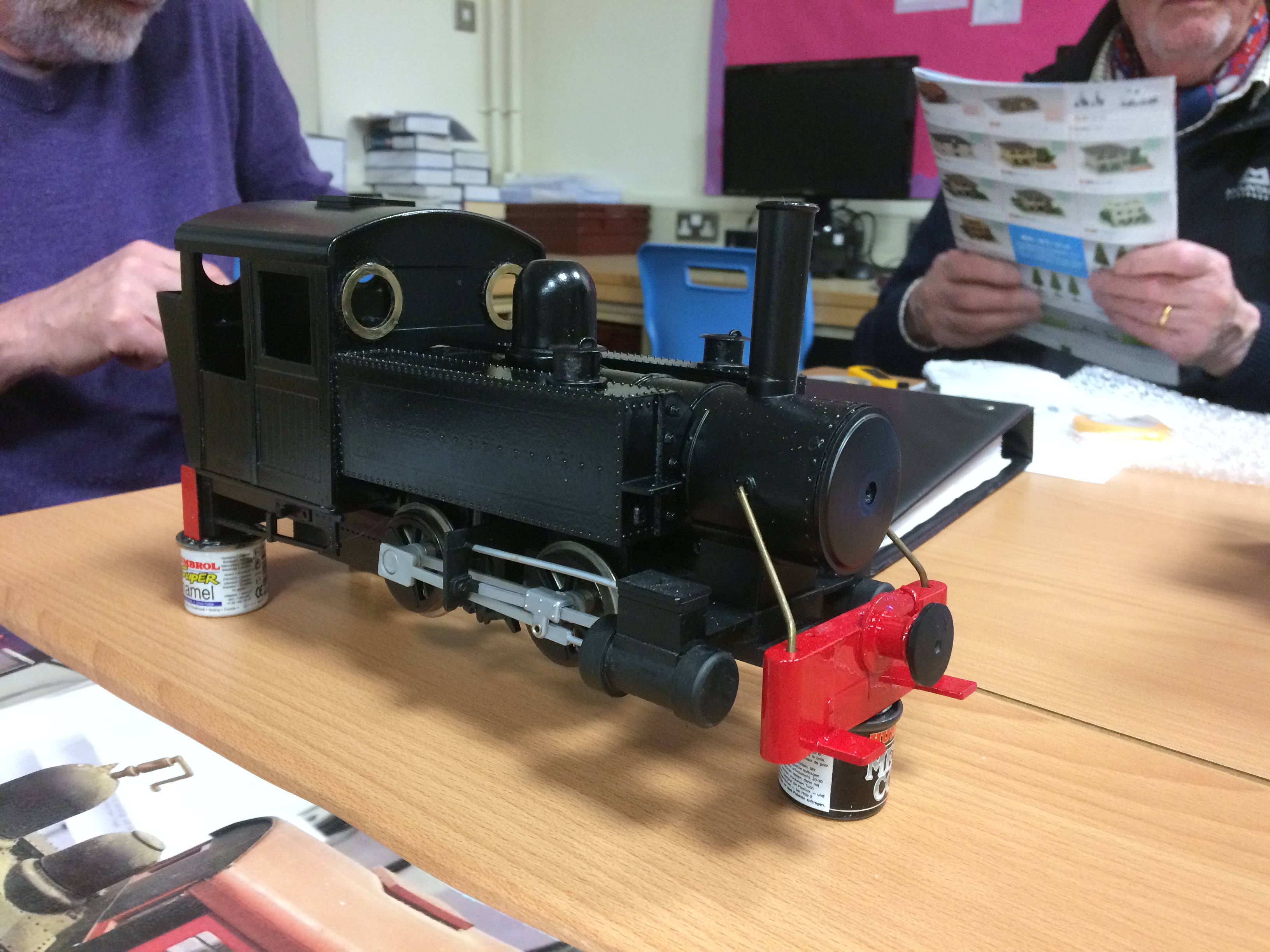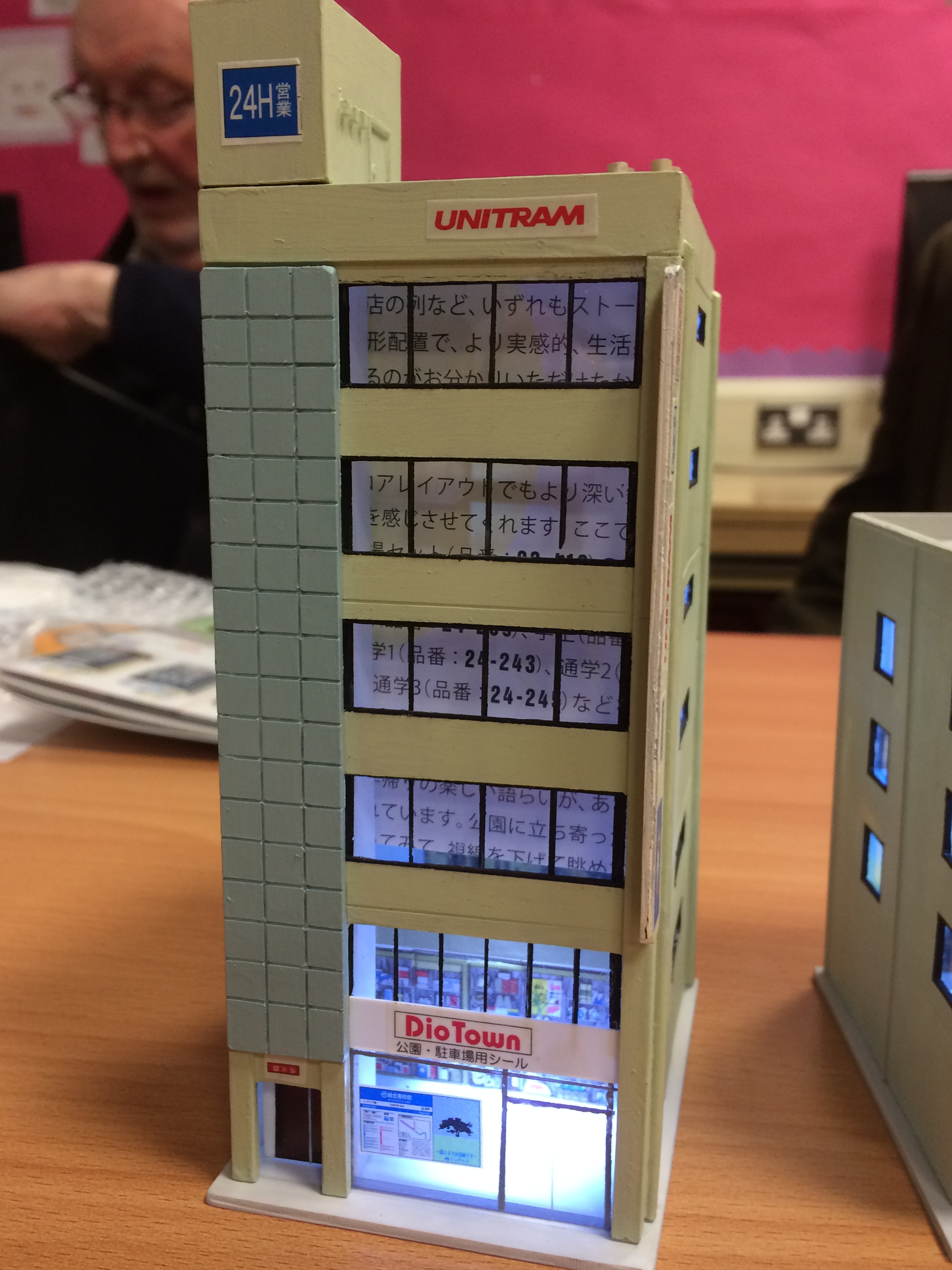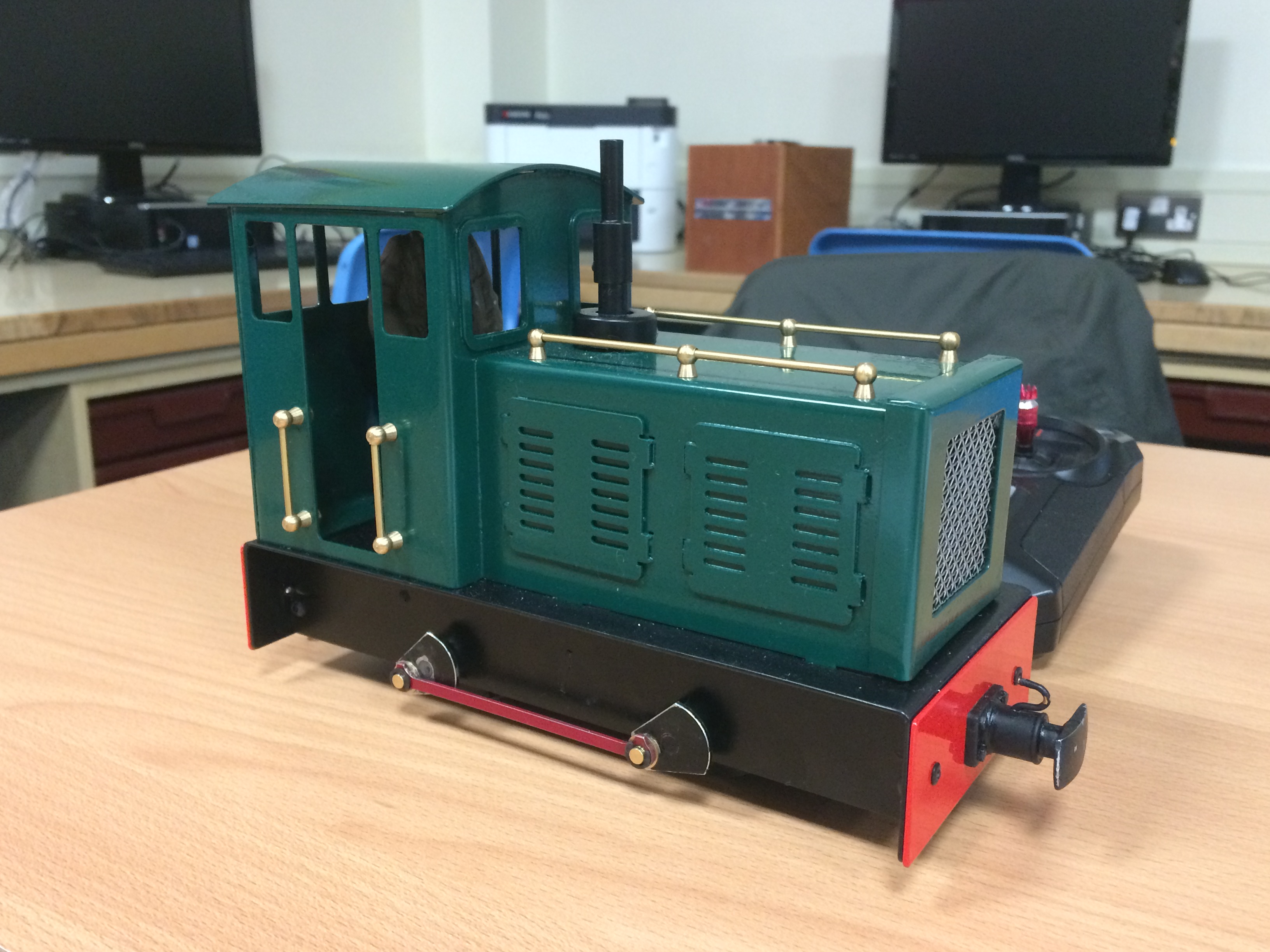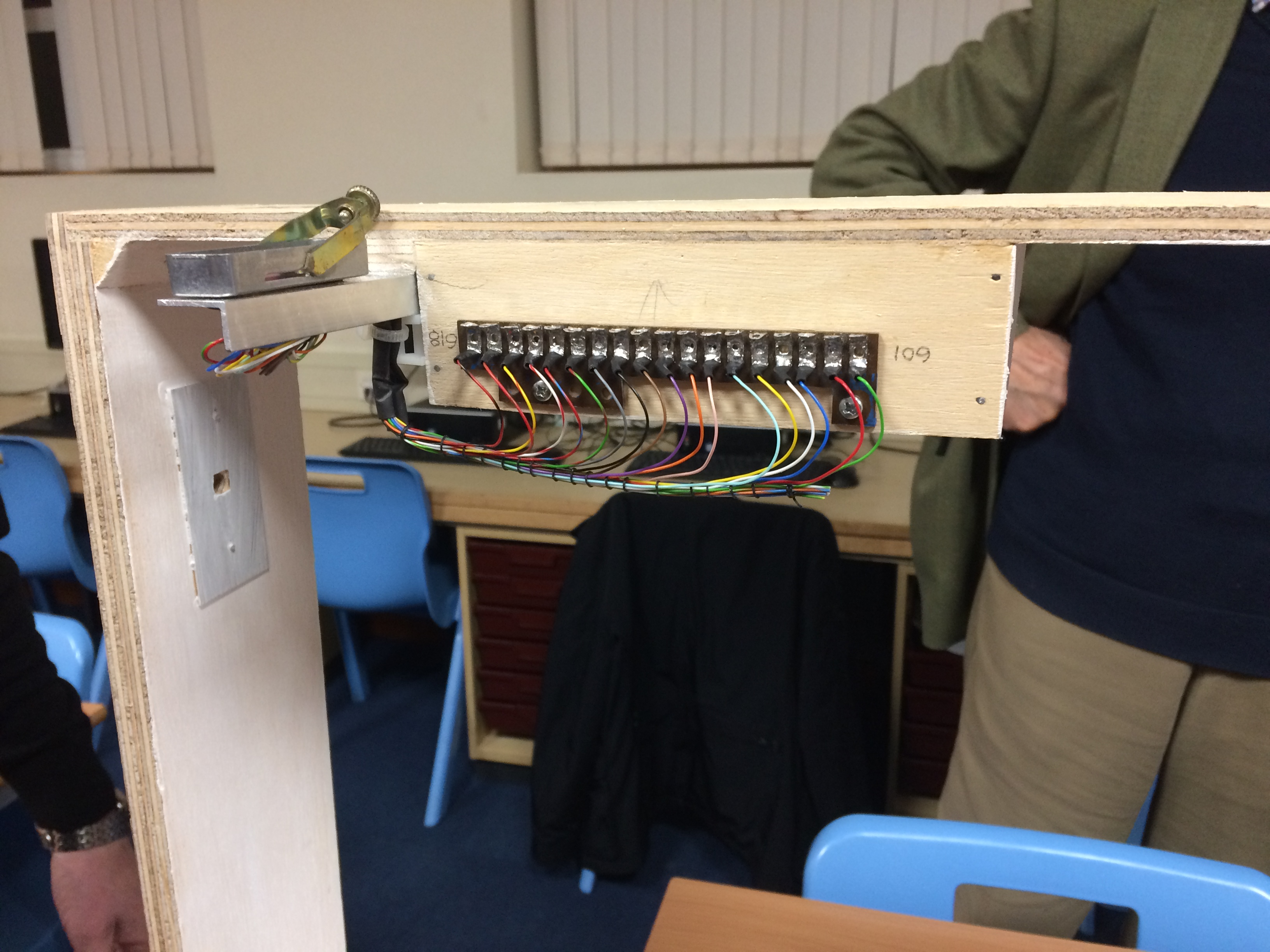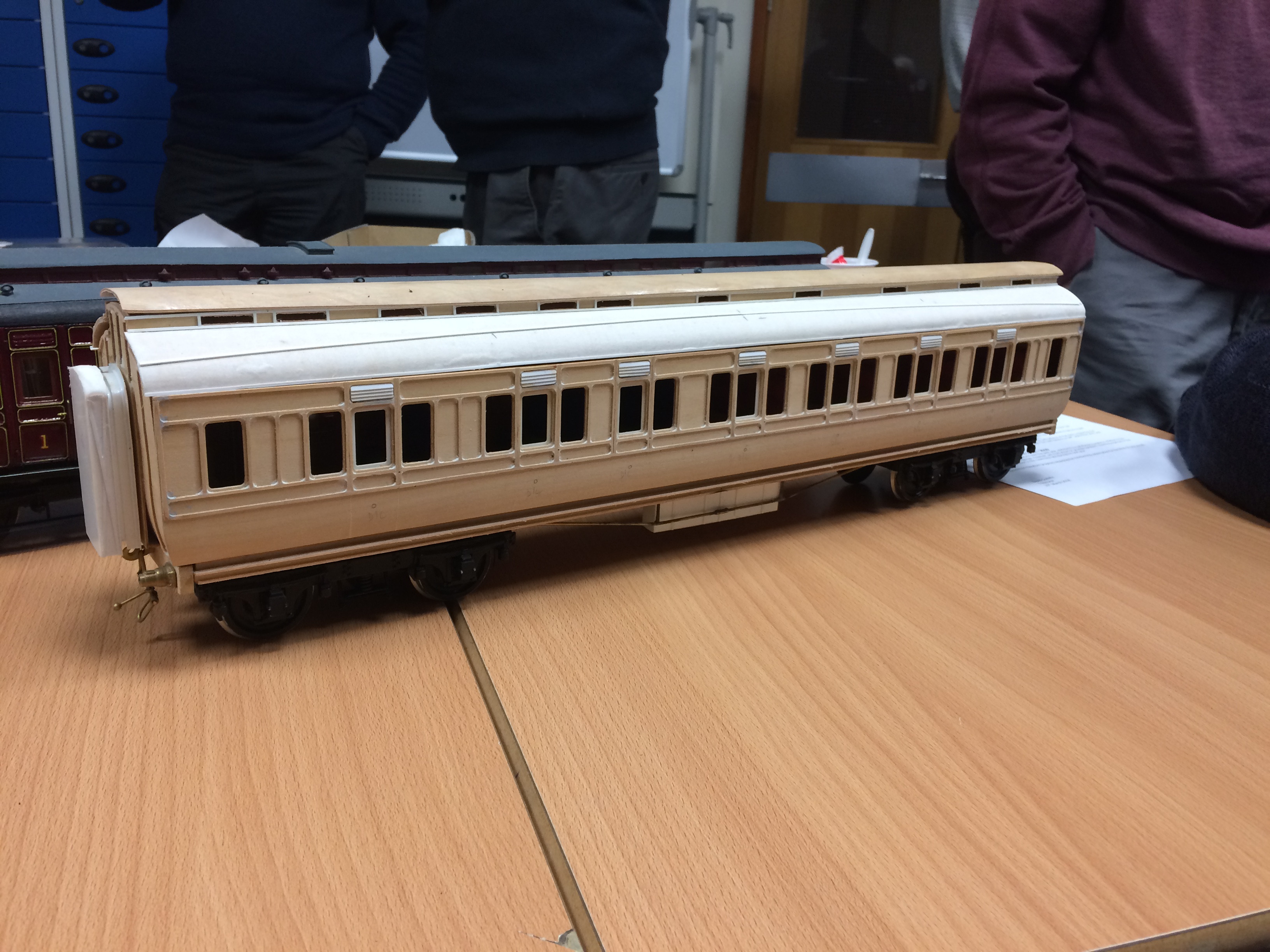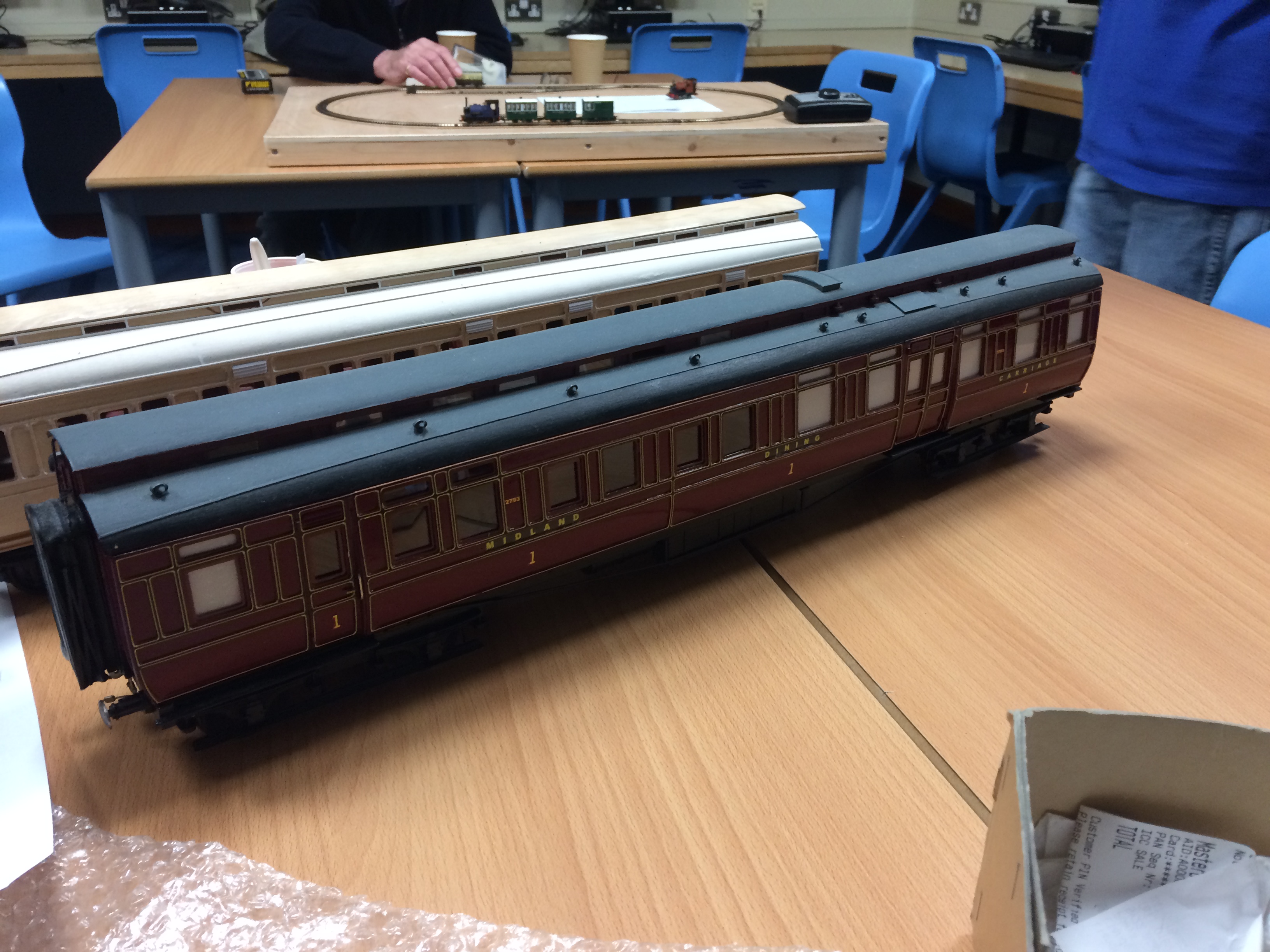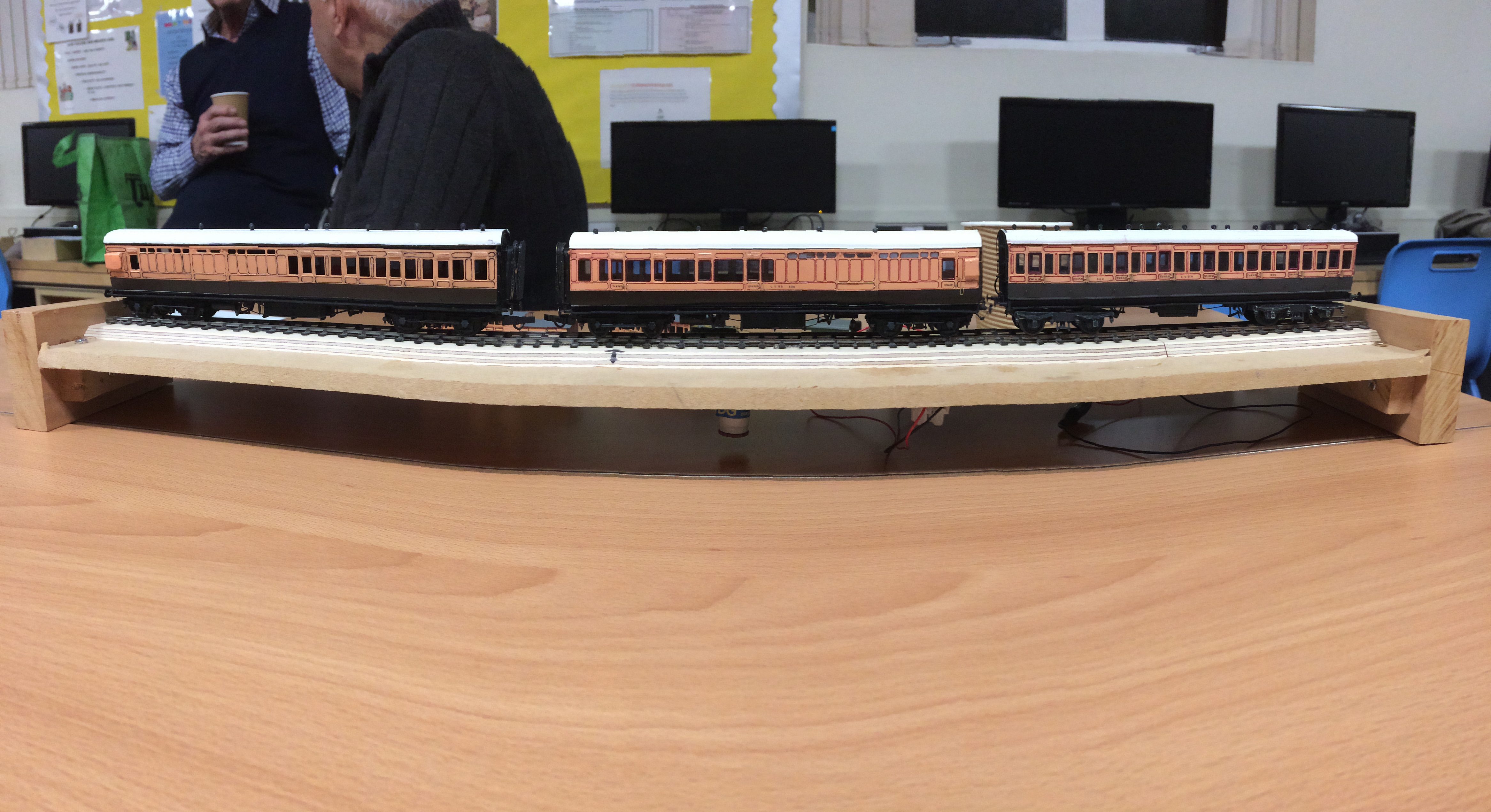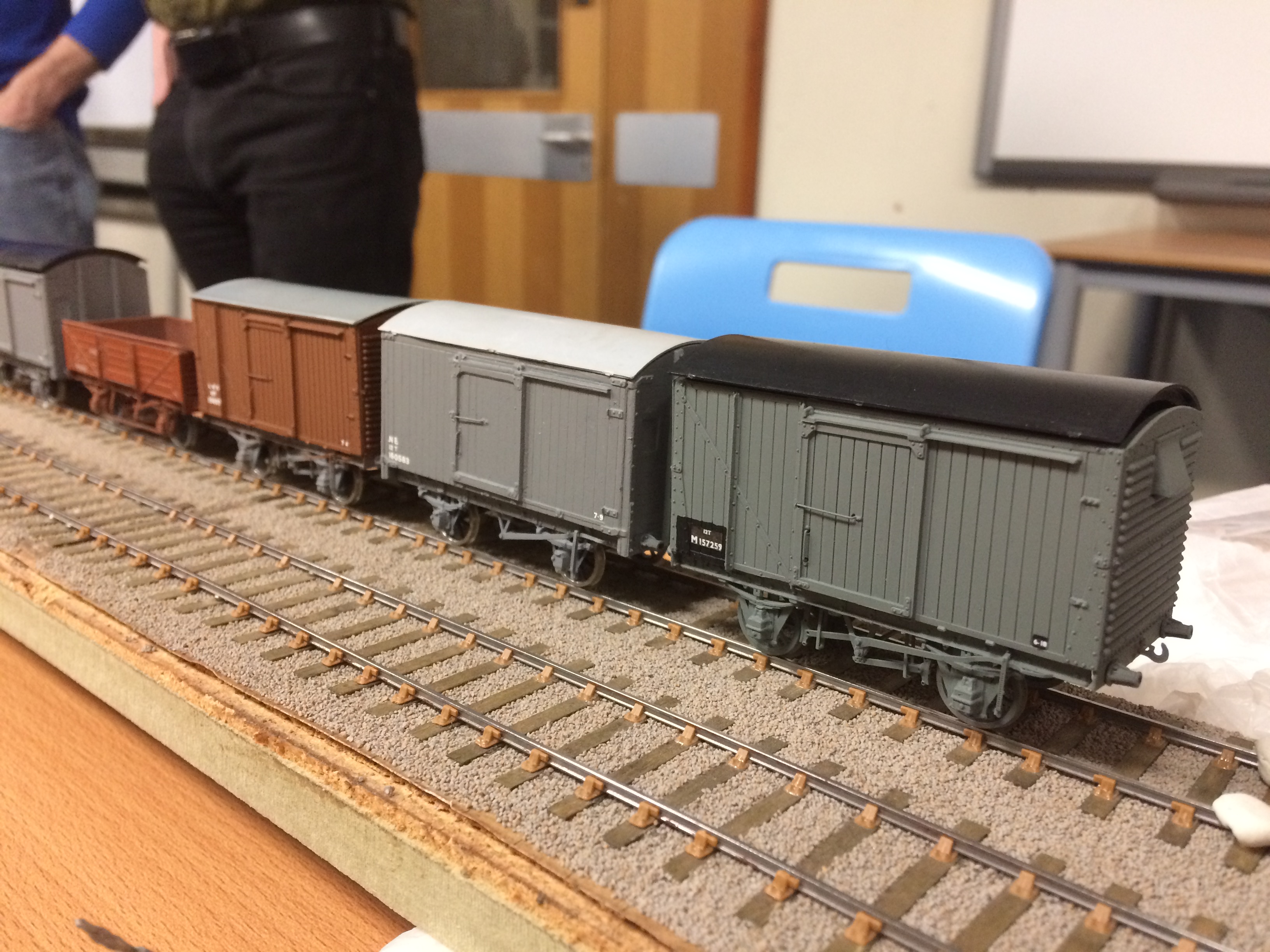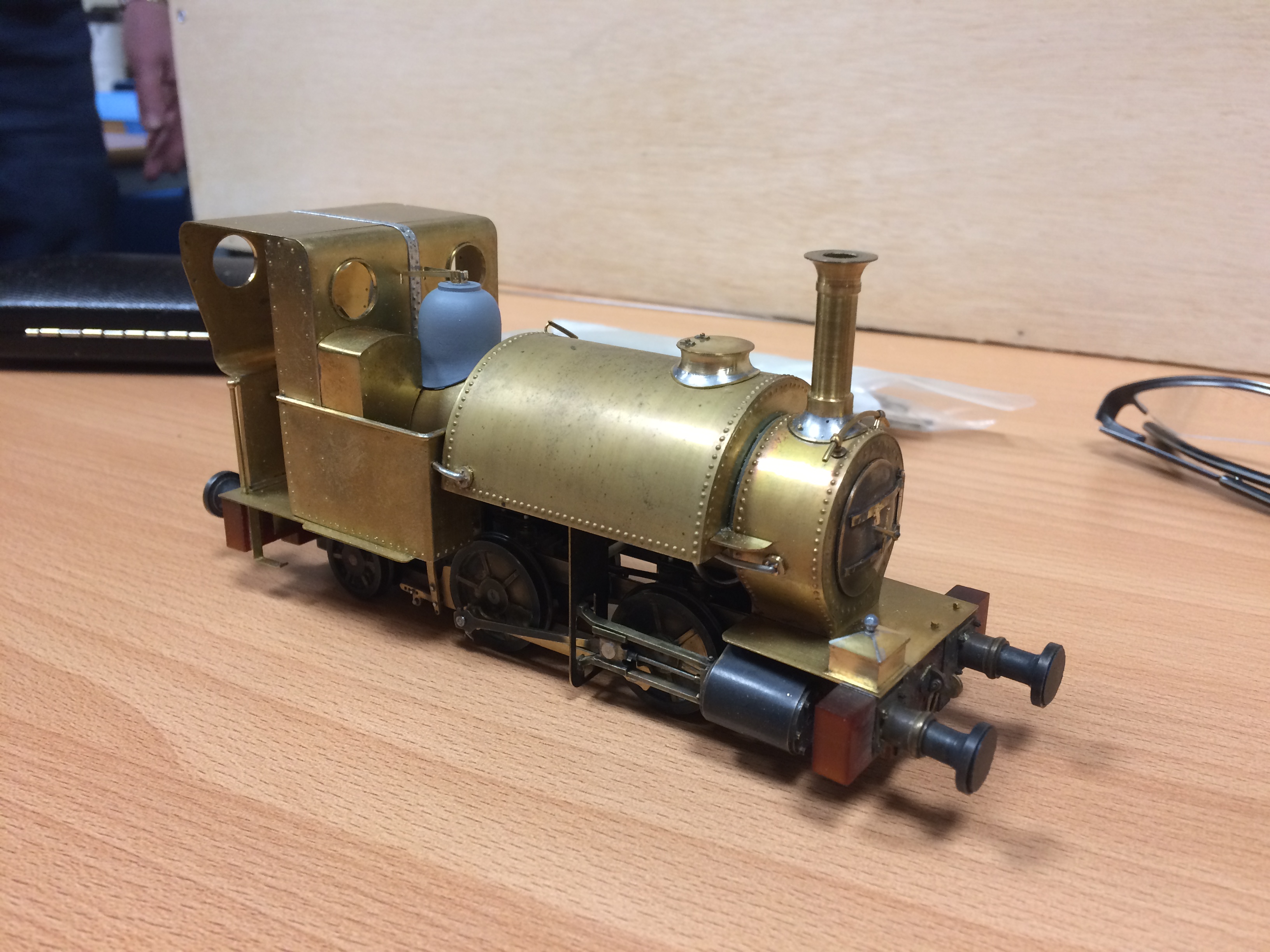AGM followed by "what's on your work bench".
Following the AGM, 13 members spoke about something they were working on currently.
Michael Glover brought along some plastikard buildings he had made using Kato models as
inspiration. He had illuminated them inside with batteries and leds imported from China; eight for
£6. He recommended Tamiya masking tape.
Ian Payne has been working on the radio controlled loco he used in last month's talk on r/c. It has
been painted and is awaiting details. Ian ran it up on blocks.
Gordon Woods showed us an overbridge from his layout of Dearne Valley Junction, just south of
Durham. The original prototype had 4 pairs of tracks running underneath and survived until a few
years ago when it was replaced. The model uses Wills kits and embossed plastic and required much
modification and is very convincingly painted and weathered. The tarmac road was produced using
gloss grey paint, generously drenched in talcum powder.
Tim Lewis had some nice P4 wagons built from plastic and etched brass kits and underframes. He
mentioned how he uses an RSU exclusively for soldering them together.
Barrie Kelsall has nearly completed a Gladiator kit of an LMS Duchess in O gauge. It is etched brass
and nickel silver with a cast resin boiler and firebox and looks very convincing. He uses split axles for
pick up from the tender only. It is an idea from Sandy Harper and Barrie uses spring wires attached
to the wheel bearings to conduct the current to the motor on the locomotive. He has not had any
pick up problems with locos using this technique.
Phil Rowe brought two Gauge 1 scratch-built Midland bogie coaches of c.1901 vintage. They are
part of a rake of seven coaches he is building for a live steam Midland 'Spinner' though Phil doubted
the single-wheeler would be able to pull them all with its limited adhesion. The coaches are made
from 1/32" plywood with the mouldings cut and glued in place. The roofs are made by laminating
thin plywood over a wooden master developed from a Tenmille wooden roof. The bogies are from
Peter Korzilius and they have ball bearings on the axles. He is using Halfords Vauxhall Burgundy
paint and has drawn the transfers 10 times full size and had them reduced before printing them onto
transfer sheets.
Sam Ryan had a whole layout for us to look at! It was his 009 test layout and he had a couple of
saddle tank locos and three Glyn Valley coaches which he ran round the track. One of the locos is
called 'Sam' and the other is Talyllyn painted in the early 1990's livery.
Frank Lax showed us his GWR 6 wheel coach in N gauge using a Peco chassis.
Stephen Duffell had a range of very nice-looking LSWR coaches in salmon pink livery. Some were 4
wheelers from 1865 with lookouts on the roof between the two end compartments. These allowed
the guard to see signals and apply the only brake on the train, other than the tender brake! The
coaches have buffers 3D printed by Modelu. He also had some LSWR bogie coaches. The Southern
Railway added extra length to old LSWR coaches by attaching a metal extension. Hornby have made
of model of these and Stephen has chopped the extension off and returned them to their original
LSWR state! This left him with longer underframes to which he has added new SW bodies with
laminated and scraped plastikard roofs and windows from glass cover slips.
Trevor Hughes brought a length of his 1/32 scale Talyllyn Railway model based on Towyn Pendre in
1908. He recommended the use of Google to accurately measure distances on the ground. He also
emphasised the importance of using good quality, waterproof plywood for baseboards and sticking
to one type to reduce the chance of warping. He varnishes before ballasting, to avoid the ply getting
too wet. The track is made from chairs, lost-wax cast in brass from 3D printed masters, keyed onto
Kalgarin flat bottomed rail. The ends of the baseboards have brass reinforcing for the rails and each
length of rail has two dropper wires to ensure continuity.
Mike Wakefield has talked before about Mamod models and he showed us their latest diesel loco
which he has fitted with sound. It is a hefty model, nearly 2kg and Mike uses it with a snowplough,
to clear debris from his garden railway.
Andrew Vaughan dreams of building a model of Ironbridge and Broseley station but even in N gauge
it is quite big! He brought along the results of some of his research and planning. These included:
large scale maps from National Library of Scotland for track plans, historic aerial photos from Britain
from Above (log in for the high definition photos) and SCARM (Simple Computer Aided Railway
Modeller) for a CAD program to design your track layout based on commercially available points.
Nick Coppin was so inspired with the visit to Peter Starkey's Gauge 1 garden line last July, that he has
started modelling in that scale for the first time since the 1970s. He brought along a scratch-built
GWR open wagon.
Once again, the range and scope of the Members' model railways, gave us an informative and
entertaining second part of the evening.
Nick Coppin
